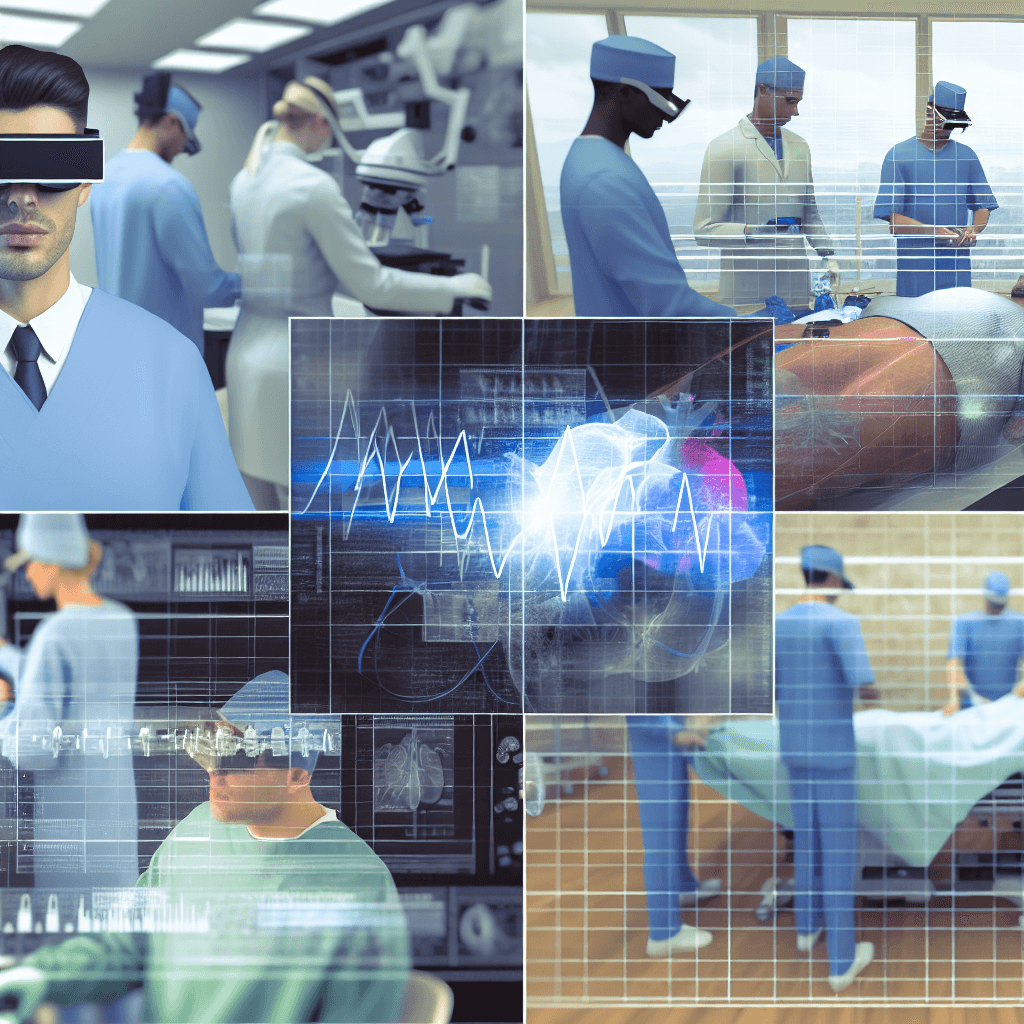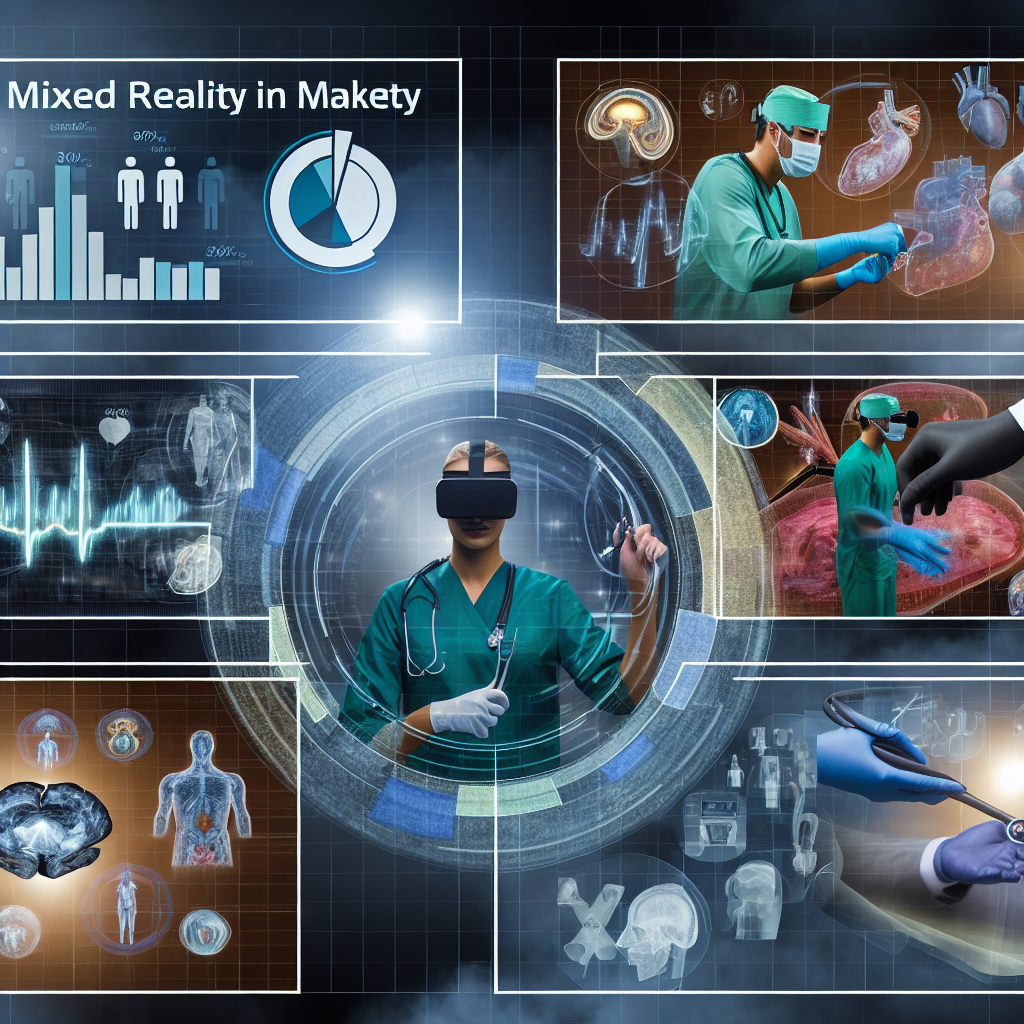Explore the mixed reality in healthcare market size, trends, and forecasts for strategic insights.
Mixed Reality in Healthcare Market Size, Analysis And Forecast

Table of Contents
Mixed Reality in Healthcare: Market Size, Analysis, and Forecast

The integration of mixed reality (MR) in healthcare is revolutionizing the medical field, offering innovative solutions for training, surgery, patient care, and more. This article delves into the current market size, detailed analysis, and future forecasts of mixed reality in healthcare, highlighting its transformative impact and potential growth.
Understanding Mixed Reality in Healthcare
Mixed reality combines elements of both virtual reality (VR) and augmented reality (AR) to create new environments where physical and digital objects co-exist and interact in real time. In healthcare, this technology is being applied in various ways, significantly enhancing both patient outcomes and healthcare professionals’ capabilities.
Current Market Size
As of the latest reports, the mixed reality in healthcare market is experiencing robust growth. According to a market research report by Grand View Research, the global mixed reality in healthcare market size was valued at approximately USD 60.8 million in 2021 and is expected to expand at a compound annual growth rate (CAGR) of 27.2% from 2022 to 2030.
Market Drivers
Several factors are propelling the growth of mixed reality in healthcare:
- Technological Advancements: Continuous improvements in MR technology make it more accessible and effective for medical use.
- Increasing Healthcare Expenditure: As global healthcare budgets increase, there is more room for innovative technologies like MR.
- Demand for Improved Surgical Outcomes: MR provides surgeons with real-time data and imaging, leading to more precise and safer procedures.
- Training and Education: MR offers medical professionals advanced training tools that are scalable and can simulate a variety of clinical scenarios.
Applications of Mixed Reality in Healthcare
Mixed reality is being utilized in several core areas within healthcare:
- Surgical Applications: Surgeons use MR for planning and guiding complex operations.
- Education and Training: Medical schools and institutions use MR to train students in anatomy, procedures, and more without the risk associated with real-life training.
- Patient Care and Rehabilitation: MR applications aid in patient rehabilitation, providing engaging and controlled environments for therapy.
- Pharmacy Management: MR can help in visualizing drug interactions and pharmacy inventory management.
Case Studies Highlighting MR Impact
Several case studies illustrate the benefits and real-world application of mixed reality in healthcare:
- Case Study 1: Surgical Precision: A notable example is the use of Microsoft HoloLens during reconstructive surgery at Imperial College London, where surgeons could overlay imaging data onto the patient’s body, improving accuracy and reducing surgery time.
- Case Study 2: Medical Training: Cleveland Clinic has partnered with Case Western Reserve University to use HoloLens for teaching medical anatomy, allowing students to visualize and interact with 3D models of the human body.
- Case Study 3: Rehabilitation: MR tools have been used in rehabilitation centers to help stroke victims regain control of their limbs by simulating sensory experiences and motor activities that promote neural recovery.
Market Challenges
Despite its potential, the adoption of mixed reality in healthcare faces several challenges:
- High Costs: The initial setup and ongoing maintenance of MR technology can be expensive.
- Technical Complexity: Some healthcare providers may face difficulties in integrating MR into their existing systems.
- Privacy Concerns: Handling sensitive patient data within MR platforms raises security and privacy issues.
- Limited Awareness: There is still a lack of awareness about the benefits and potential applications of MR in some parts of the healthcare sector.
Future Outlook and Forecast
The future of mixed reality in healthcare looks promising with several trends likely to influence its trajectory:
- Advancements in MR Technology: Ongoing improvements will likely make MR more effective and accessible.
- Integration with AI and IoT: Combining MR with other technologies like artificial intelligence (AI) and the Internet of Things (IoT) could enhance its capabilities further.
- Expansion into New Areas: Beyond surgery and training, MR could expand into areas like mental health, remote patient monitoring, and more.
Market forecasts suggest that by 2030, the mixed reality in healthcare market could reach values upwards of USD 500 million, driven by continuous technological advancements and an increasing acceptance of digital health solutions.
Conclusion
Mixed reality is set to transform the healthcare industry by improving surgical precision, enhancing medical training, and offering new ways to manage patient care. Despite facing challenges such as high costs and technical complexity, the future of MR in healthcare is bright, with significant growth expected in the coming years. As technology continues to evolve, so too will its applications in healthcare, potentially leading to better patient outcomes and more efficient medical practices.
With its promising applications and growing market size, mixed reality in healthcare represents a frontier of technological innovation that holds the potential to redefine traditional medical practices and training methodologies.








